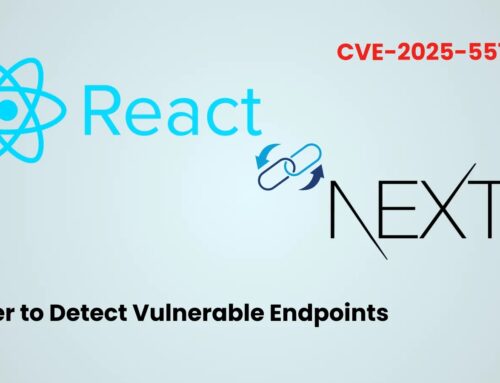
Google Sues ‘Lighthouse’ Phishing-as-a-service Kit Behind Massive Phishing Attacks
The digital battlefield just got a stark reminder of its pervasive threats. Google’s security researchers have peeled back the curtain on a truly alarming operation: “Lighthouse.” This sophisticated phishing-as-a-service (PhaaS) platform has systematically victimized over one million individuals across more than 120 countries, marking it as one of the most damaging SMS-based scam networks in recent memory. This isn’t just another phishing tactic; it’s a meticulously organized criminal enterprise, prompting Google to take decisive legal action to dismantle its entire infrastructure.
Unmasking the “Lighthouse” Phishing-as-a-Service
At its core, Lighthouse is a prime example of the industrialization of cybercrime. Instead of individual attackers crafting their own phishing campaigns, platforms like Lighthouse provide a complete, turnkey solution. This lowers the barrier to entry for aspiring cybercriminals, enabling them to launch sophisticated attacks with minimal technical expertise. The “as-a-service” model means that threat actors can simply subscribe to the platform, gaining access to tools and infrastructure designed to mimic legitimate organizations and trick unsuspecting users.
The sheer scale of Lighthouse’s operation underscores a critical shift in the threat landscape. Its reach across over 120 countries highlights a global network designed to exploit trust and leverage social engineering at an unparalleled level. This isn’t random acts of malice; it’s a well-oiled machine built for maximum impact and illicit profit.
How Lighthouse Leverages SMS Phishing (SMiShing)
Lighthouse’s primary weapon is SMS phishing, often referred to as SMiShing. This technique exploits the prevalent use of mobile phones and the perceived legitimacy of text messages. Attackers send fraudulent text messages designed to appear as if they originate from trusted entities – banks, government agencies, delivery services, or even popular social media platforms.
These messages typically contain malicious links that, when clicked, redirect victims to fake websites. These sites are meticulously designed to mimic legitimate login pages, prompting users to enter their credentials, financial information, or other sensitive data. Once entered, this information is harvested by the Lighthouse operators, allowing them to gain unauthorized access to accounts, commit financial fraud, and compromise personal privacy.
- Impersonation: Messages often convincingly spoof sender IDs or use language suggesting urgency or an immediate action is required.
- Malicious Links: Embedded URLs lead to expertly crafted fake websites that are difficult for the average user to distinguish from authentic sites.
- Data Harvesting: The ultimate goal is to collect sensitive information, from login credentials to credit card numbers.
The Google Lawsuit: A Fight for Digital Security
Google’s decision to file litigation against the Lighthouse operators is a significant move. It signals a proactive approach from a major technology company to not just defend its users but actively dismantle the infrastructure of cybercrime. Legal action against PhaaS providers aims to:
- Disrupt Operations: By targeting the individuals and entities behind these platforms, Google seeks to freeze assets, seize infrastructure, and prevent future malicious activities.
- Set a Precedent: Such lawsuits can establish legal precedents that make it harder for similar services to operate with impunity, sending a strong message to other cybercriminal enterprises.
- Protect Users: Ultimately, the goal is to enhance user safety online by directly attacking the sources of widespread phishing campaigns.
While the specifics of the lawsuit and its progression are ongoing, the intent is clear: to hold those responsible for orchestrating these extensive attacks accountable for the damage inflicted upon millions of users globally.
Remediation Actions and Protective Measures Against Phishing
Given the pervasive nature of phishing attacks, especially those facilitated by sophisticated platforms like Lighthouse, proactive defense is paramount for individuals and organizations alike. There’s no specific CVE tied to a PhaaS platform itself, as it’s a methodology, not a vulnerability in software. However, general best practices for cybersecurity are more critical than ever.
For Individuals:
- Be Skeptical of Unsolicited Messages: Treat unexpected texts or emails with caution, especially if they ask for personal information or immediate action.
- Verify Sender Identity: If a message seems suspicious, contact the supposed sender directly via a known, legitimate channel (e.g., their official website or a trusted phone number), not by replying to the suspicious message.
- Inspect Links Carefully: Before clicking a link in a message, hover over it (on desktop) or long-press (on mobile) to see the actual URL. Look for inconsistencies or misspellings.
- Enable Two-Factor Authentication (2FA): Where available, 2FA adds an essential layer of security, making it much harder for attackers to access accounts even if they steal your password.
- Report Phishing: Forward suspicious SMS messages to your carrier (e.g., short code 7726 in the US) and report suspicious emails to your email provider.
For Organizations:
- Employee Training: Regular and comprehensive security awareness training is crucial. Employees should be educated on how to recognize and report phishing attempts.
- Email and SMS Filtering: Implement robust email and SMS protection solutions to detect and block malicious content before it reaches users.
- Multi-Factor Authentication (MFA): Mandate MFA for all user accounts, especially for access to critical systems and data.
- Incident Response Plan: Develop and regularly test an incident response plan to quickly mitigate the impact of successful phishing attacks.
- Domain Monitoring: Monitor for newly registered domains that mimic your organization’s brand, which are often used in phishing campaigns.
Conclusion
The Google lawsuit against the “Lighthouse” Phishing-as-a-service kit is a critical development in the ongoing fight against cybercrime. It spotlights the sophisticated and global nature of modern phishing operations and underscores the necessity for aggressive, multi-faceted responses. For both individuals and organizations, remaining vigilant, adopting strong security practices, and understanding the evolving tactics of threat actors are no longer optional—they are absolutely essential for navigating the complex digital landscape safely.





